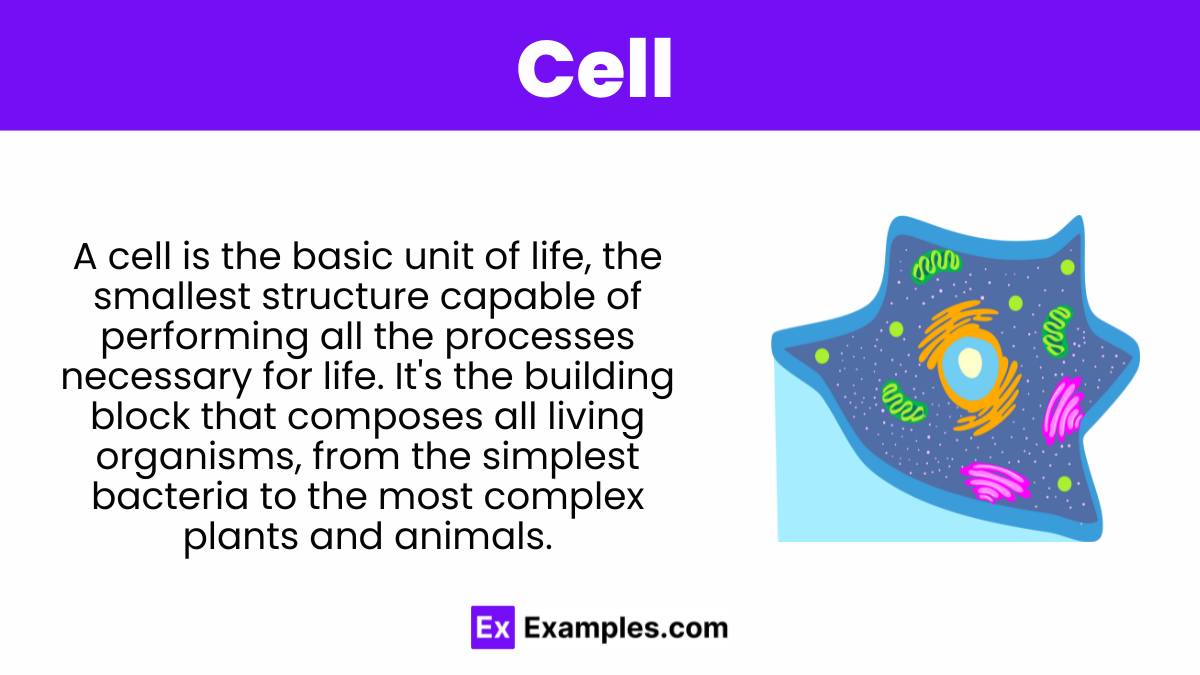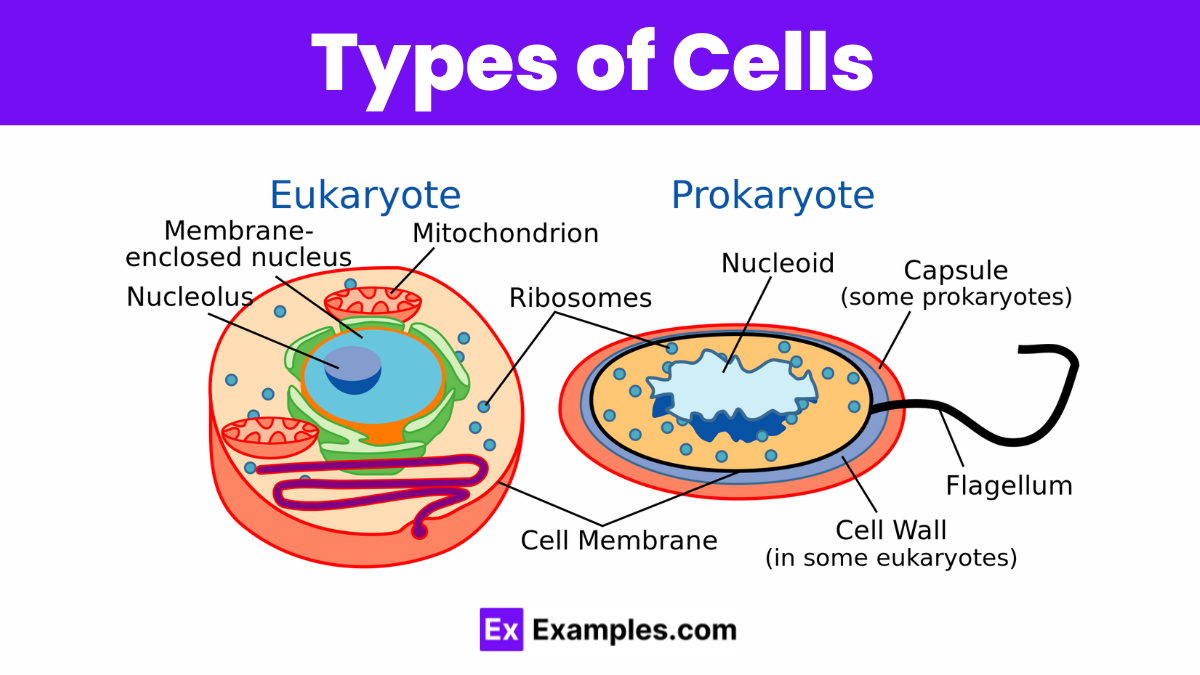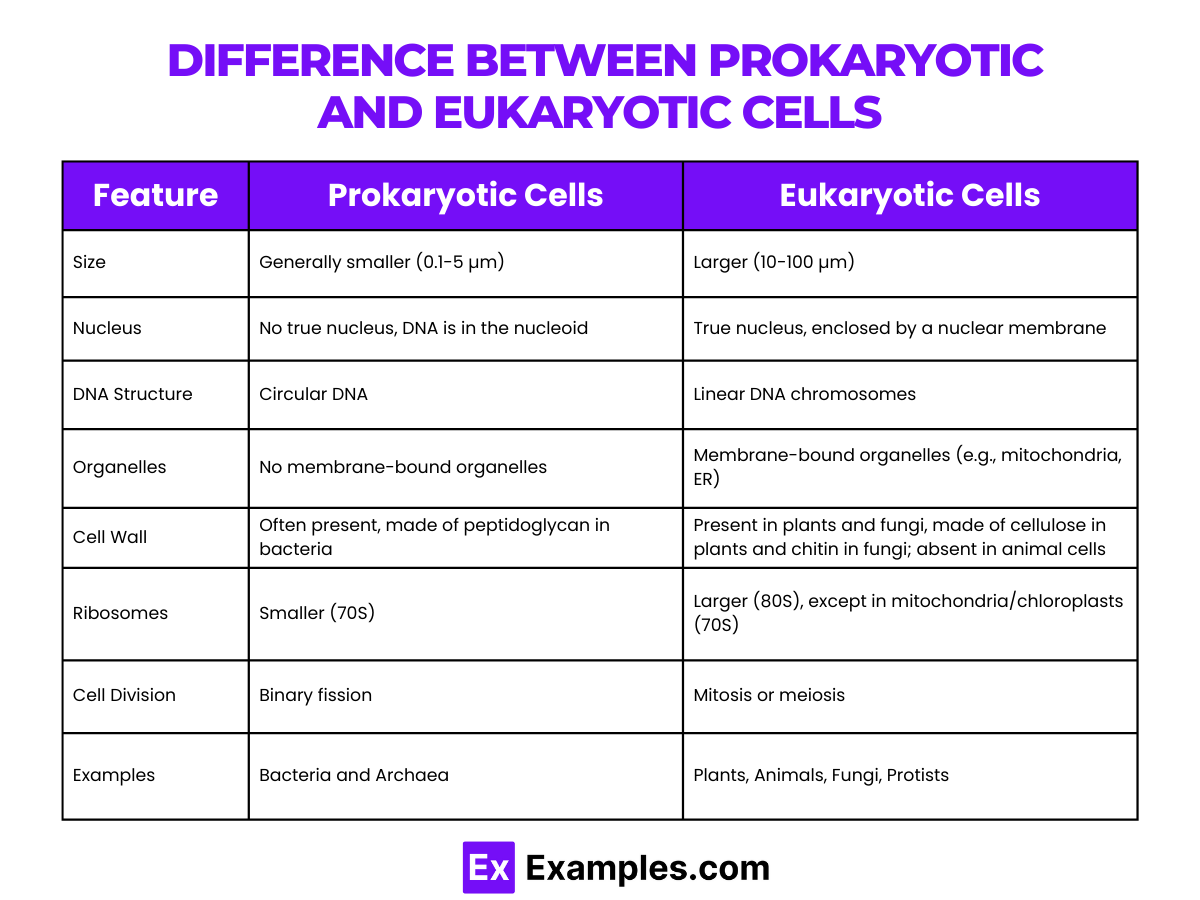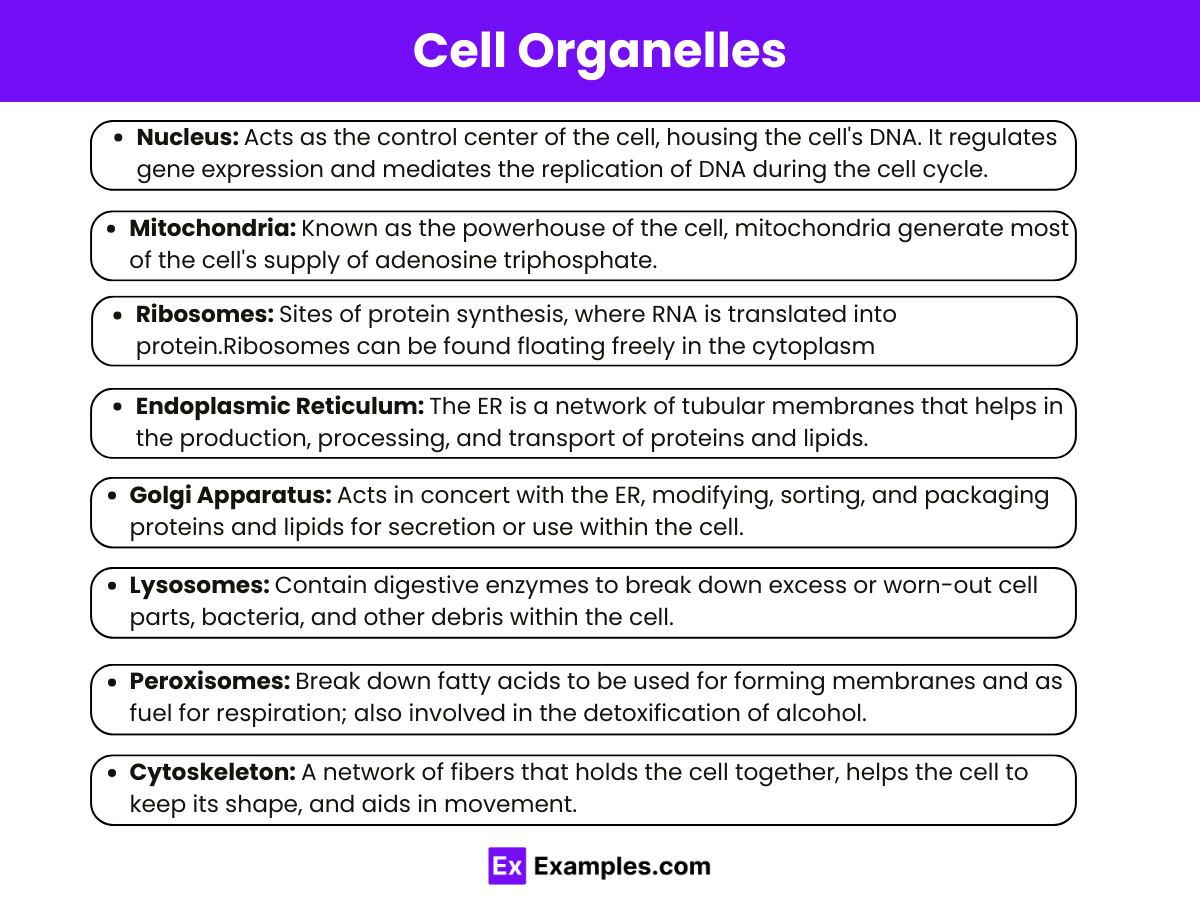Cell – Discovery of Cells, Characteristics, Types, Difference, Structure, Functions
Dive into the captivating world of cells with our comprehensive guide, designed to illuminate the fundamental building blocks of life. From the sturdy cell walls of plants to the versatile cell membranes that encircle all living cells, this guide offers a deep dive into cellular structure and function. Packed with engaging examples and grounded in the latest scientific insights, our exploration is tailored for both enthusiasts and scholars alike. Embark on a journey through the microscopic universe, where the marvels of cell biology come to life, enriching your understanding and sparking curiosity.
What is a Cell ?
A cell is the basic unit of life, the smallest structure capable of performing all the processes necessary for life. It’s the building block that composes all living organisms, from the simplest bacteria to the most complex plants and animals. Cells can perform essential functions such as taking in nutrients, converting those nutrients into energy, carrying out specialized functions, and reproducing. They are made up of various parts, including a cell membrane that protects and encloses the cell, a nucleus or nucleoid that contains genetic material, and cytoplasm filled with organelles that perform various tasks. Cells vary widely in size, shape, and function, reflecting the diversity of life itself.
Discovery of Cells
The discovery of cells is credited to Robert Hooke, an English scientist, who in 1665 observed slices of cork through a microscope he had refined. He noticed tiny, pore-like structures, which he described as “cells” because they reminded him of the cells (rooms) in a monastery. Hooke’s observations were published in his book “Micrographia.” However, these were actually the cell walls of dead plant cells; Hooke did not observe living cells.
The concept of the cell as the basic unit of life was further developed by Anton van Leeuwenhoek, a Dutch tradesman and scientist. Using microscopes of his own design, which were significantly more powerful than those used by Hooke, Leeuwenhoek was able to observe and describe for the first time live cells, including bacteria, sperm cells, and blood cells, in the late 17th century. His meticulous observations laid the groundwork for microbiology.
The cell theory, stating that all living things are composed of cells, that the cell is the basic unit of life, and that all cells come from pre-existing cells, was formulated in the 19th century by scientists Matthias Schleiden, Theodor Schwann, and Rudolf Virchow. This theory is a fundamental concept in biology, highlighting the cell’s role as the cornerstone of life.
Characteristics of Cells
Cells, the fundamental units of life, exhibit several key characteristics that define their essential roles in living organisms:
- Basic Unit of Life: Cells are the smallest entities that can carry out all functions of life, making them the basic building blocks of all living organisms.
- Enclosed by a Membrane: Every cell is surrounded by a cell membrane, a thin layer that controls the movement of substances in and out of the cell, maintaining the internal environment.
- Contain Genetic Material: Cells hold genetic material (DNA) which dictates the cell’s functions and is passed on during cell division, ensuring the continuation of life.
- Metabolism: Cells have the ability to metabolize substances, converting energy from one form to another and utilizing it for various cellular processes.
- Growth and Reproduction: Cells are capable of growing and dividing, a process that can lead to the reproduction of the organism. This is fundamental for the survival and evolution of living beings.
- Responsiveness: Cells can respond to external stimuli, a trait that allows organisms to adapt to their environment for survival.
- Carry Out Specialized Functions: While all cells share common features, many are specialized to perform unique tasks within an organism, contributing to the overall function and well-being of the organism.
Types of Cells
Cells, the basic building blocks of all living organisms, can be broadly classified into two types: prokaryotic cells and eukaryotic cells. Each type has distinct characteristics and can be further divided into various subtypes, depending on the organism they belong to. Here’s an overview:
1. Prokaryotic Cells
Prokaryotic cells are simpler and smaller than eukaryotic cells. They do not have a nucleus or other membrane-bound organelles. Instead, their DNA is located in a region called the nucleoid. Prokaryotic cells are found in bacteria and archaea, which represent two of the three major domains of life. They can be further classified into various types based on their shape, metabolic properties, and environments in which they thrive. Examples include:
- Bacteria: Such as Escherichia coli (E. coli), which are often found in the intestines of humans and animals, and Streptococcus, which includes species that can cause strep throat.
- Archaea: Often found in extreme environments, such as hot springs and salt lakes, with examples including Halophiles (salt-loving) and Thermophiles (heat-loving).
2. Eukaryotic Cells
Eukaryotic cells are more complex and larger than prokaryotic cells. They contain a nucleus enclosed within membranes and numerous membrane-bound organelles such as mitochondria, endoplasmic reticulum, and Golgi apparatus, which perform specific functions within the cell. Eukaryotic cells are found in plants, animals, fungi, and protists. They can be classified into:
- Animal Cells: Lack cell walls and chloroplasts but have an extracellular matrix and centrioles. Examples include muscle cells and nerve cells.
- Plant Cells: Have cell walls made of cellulose, chloroplasts for photosynthesis, and large central vacuoles. Examples include leaf cells and root cells.
- Fungal Cells: Similar to plant cells but have cell walls made of chitin. Examples include yeast and mold cells.
- Protists: A diverse group of eukaryotic microorganisms, which are neither plants, animals, nor fungi. Examples include amoebae and paramecia.
Difference Between Prokaryotic and Eukaryotic Cells
| Feature | Prokaryotic Cells | Eukaryotic Cells |
|---|---|---|
| Size | Generally smaller (0.1-5 µm) | Larger (10-100 µm) |
| Nucleus | No true nucleus, DNA is in the nucleoid | True nucleus, enclosed by a nuclear membrane |
| DNA Structure | Circular DNA | Linear DNA chromosomes |
| Organelles | No membrane-bound organelles | Membrane-bound organelles (e.g., mitochondria, ER) |
| Cell Wall | Often present, made of peptidoglycan in bacteria | Present in plants and fungi, made of cellulose in plants and chitin in fungi; absent in animal cells |
| Ribosomes | Smaller (70S) | Larger (80S), except in mitochondria/chloroplasts (70S) |
| Cell Division | Binary fission | Mitosis or meiosis |
| Examples | Bacteria and Archaea | Plants, Animals, Fungi, Protists |
Cell Structure
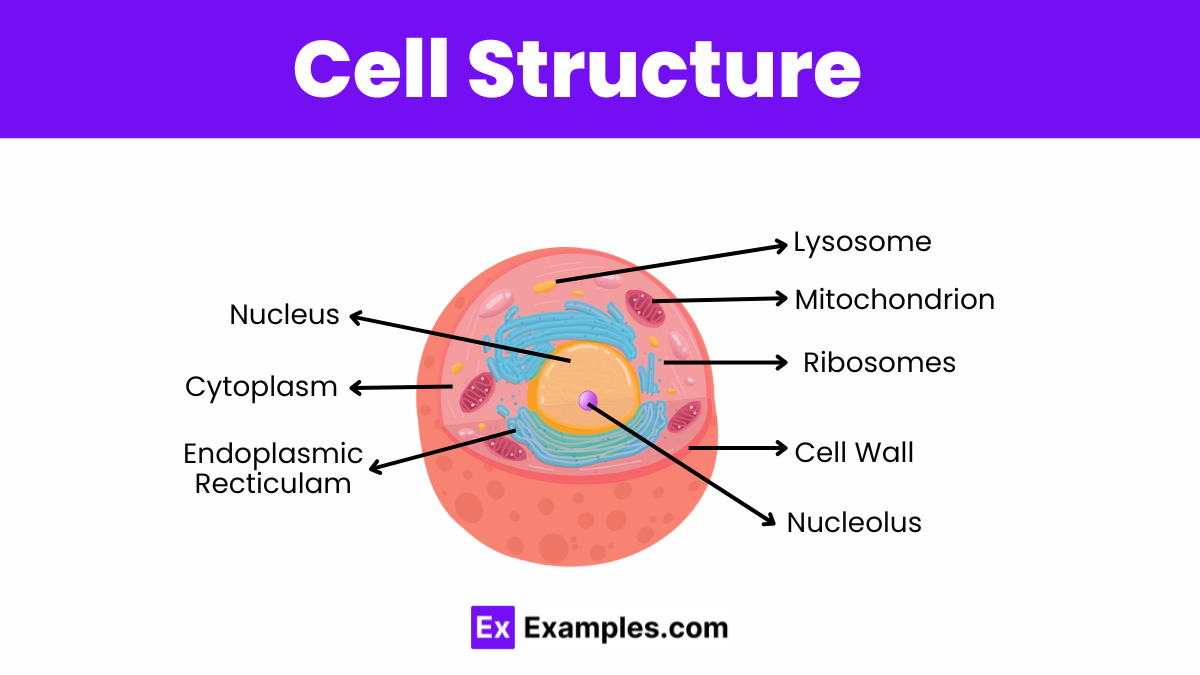
The structure of a cell is designed to efficiently carry out its functions. Here’s a breakdown of the key components and structures found in typical eukaryotic and prokaryotic cells:
Eukaryotic Cell Structure
Eukaryotic cells are characterized by their complex structure, which includes the following key components:
- Nucleus: The nucleus is the control center of the cell, containing most of the cell’s genetic material. It’s enclosed by the nuclear envelope, a double membrane with pores that regulate the flow of substances in and out.
- Mitochondria: Often referred to as the “powerhouses” of the cell, mitochondria generate most of the cell’s supply of adenosine triphosphate (ATP), used as a source of chemical energy.
- Endoplasmic Reticulum (ER): The ER is a network of tubular membranes within the cytoplasm of the cell, involved in protein and lipid synthesis. It comes in two forms: rough ER, which is dotted with ribosomes, and smooth ER, which is not.
- Golgi Apparatus: The Golgi apparatus is involved in the modification, sorting, and packaging of proteins and lipids for secretion or use within the cell.
- Lysosomes and Peroxisomes: These organelles are involved in digestion and waste removal. Lysosomes contain digestive enzymes, while peroxisomes neutralize toxic substances.
- Ribosomes: Ribosomes are the sites of protein synthesis. They can be found floating freely in the cytoplasm or attached to the rough ER.
- Cytoskeleton: The cytoskeleton is a network of protein fibers that help the cell maintain its shape, secure some organelles in specific positions, allow cytoplasm and vesicles to move within the cell, and enable unicellular organisms to move independently.
- Cell Membrane: The cell membrane is a lipid bilayer that encloses the cell, regulating the passage of substances in and out of the cell.
Prokaryotic Cell Structure
Prokaryotic cells are simpler and smaller than eukaryotic cells, with key components including:
- Nucleoid: A region within the cell where the circular DNA molecule is located. Unlike the eukaryotic nucleus, the nucleoid is not enclosed by a membrane.
- Cell Wall: Most prokaryotic cells have a rigid cell wall that offers structural support and protection. In bacteria, the cell wall is made of peptidoglycan.
- Plasma Membrane: Similar to eukaryotes, the plasma membrane is a phospholipid bilayer that controls the movement of substances into and out of the cell.
- Ribosomes: Prokaryotic ribosomes are smaller than those in eukaryotic cells and are involved in protein synthesis.
- Capsule: Some prokaryotic cells have a capsule, a gelatinous covering that helps the cell adhere to surfaces and protects it from phagocytosis.
- Flagella and Pili: These structures are involved in movement and adherence to surfaces. Flagella enable motility, while pili are used for attachment to surfaces and in conjugation for DNA transfer.
Cell Organelles
Cell organelles are specialized structures within cells that perform distinct processes necessary for the cell’s life and function. Here’s an overview of key organelles found in eukaryotic cells, along with their functions:
1. Nucleus
- Function: Acts as the control center of the cell, housing the cell’s DNA. It regulates gene expression and mediates the replication of DNA during the cell cycle.
2. Mitochondria
- Function: Known as the powerhouse of the cell, mitochondria generate most of the cell’s supply of adenosine triphosphate (ATP), which is used as a source of chemical energy.
3. Ribosomes
- Function: Sites of protein synthesis, where RNA is translated into protein. Ribosomes can be found floating freely in the cytoplasm or attached to the endoplasmic reticulum.
4. Endoplasmic Reticulum (ER)
- Function: The ER is a network of tubular membranes that helps in the production, processing, and transport of proteins and lipids. The rough ER is involved in protein synthesis, while the smooth ER is involved in lipid synthesis.
5. Golgi Apparatus
- Function: Acts in concert with the ER, modifying, sorting, and packaging proteins and lipids for secretion or use within the cell.
6. Lysosomes
- Function: Contain digestive enzymes to break down excess or worn-out cell parts, bacteria, and other debris within the cell.
7. Peroxisomes
- Function: Break down fatty acids to be used for forming membranes and as fuel for respiration; also involved in the detoxification of alcohol and other harmful compounds.
8. Cytoskeleton
- Function: A network of fibers that holds the cell together, helps the cell to keep its shape, and aids in movement.
9. Cell Membrane
- Function: A phospholipid bilayer that surrounds the cell, providing protection and determining what goes in and out of the cell. It plays a critical role in cell communication and signaling.
10. Vacuoles
- Function: Storage bubbles found in cells. In plant cells, vacuoles hold water, nutrients, or waste products. They are larger in plant cells than in animal cells.
11. Chloroplasts (in plant cells)
- Function: Contain chlorophyll and are responsible for photosynthesis, the process by which sunlight is converted into energy.
12. Cell Wall (in plant cells and fungi)
- Function: A rigid layer that surrounds the cell membrane, providing structural support and protection. In plant cells, it is made of cellulos.
Cell theory
Cell theory is a fundamental principle of biology that describes the properties of cells, the basic unit of life in all living things. Formulated in the mid-19th century, it has three main tenets:
- All Living Organisms Are Composed of Cells:
- This principle states that every living creature, from the simplest bacteria to the most complex plants and animals, consists of one or more cells.
- The Cell is the Basic Unit of Life:
- The cell is the smallest unit that can carry out all the processes necessary for life. This includes processes such as metabolism, energy production, and self-replication. Cells can function independently or as part of a larger organism.
- All Cells Arise from Pre-existing Cells:
- This principle refutes the earlier notion of spontaneous generation, asserting that cells do not arise from non-living material. Instead, they are produced only by the division of existing cells. This concept was a significant advance in the understanding of the continuous chain of life.
Functions of Cell
Cells, as the basic units of life, perform a multitude of critical functions that are essential for the survival, growth, and reproduction of living organisms. These functions can be broadly categorized into several key areas:
1. Support and Structure
- Cells provide structural support to organisms. In multicellular organisms, cells aggregate to form tissues and organs, each specialized for different functions. The cytoskeleton within cells helps maintain their shape and offers mechanical support.
2. Nutrition and Metabolism
- Cells carry out metabolic reactions that provide energy necessary for survival. This includes processes like glycolysis, the citric acid cycle, and oxidative phosphorylation in eukaryotic cells, as well as various metabolic pathways in prokaryotic cells for energy production.
- They absorb nutrients from the environment, which are then broken down and transformed through cellular respiration to generate ATP, the energy currency of the cell.
3. Growth and Reproduction
- Cells grow by synthesizing new cellular components and replicate by dividing, ensuring the continuation of life. Eukaryotic cells typically reproduce through mitosis (for growth and repair) and meiosis (for producing gametes in sexually reproducing organisms).
- Cellular growth and division are tightly regulated processes, ensuring that cells reproduce at the right time and maintain appropriate sizes.
4. Response to Stimuli
- Cells can respond to environmental changes or signals through a process known as cell signaling. This includes responses to chemical signals (like hormones), physical signals (like light and temperature), and mechanical signals.
- These responses enable cells to adapt to changes in their environment, communicate with other cells, and coordinate their functions within the context of a larger organism.
5. Homeostasis
- Cells maintain internal conditions within a narrow range despite changes in the external environment. This includes regulating concentrations of ions and molecules, pH levels, and temperature, ensuring optimal conditions for cellular processes.
6. Waste Removal
- Cells have mechanisms to remove waste products resulting from metabolic reactions. For example, lysosomes in eukaryotic cells digest excess or worn-out organelles, food particles, and engulfed viruses or bacteria.
7. Transport of Materials
- Cells regulate the transport of materials in and out through their cell membrane. This includes the selective import of nutrients, export of waste products, and exchange of gases essential for cellular respiration.
8. Communication and Signaling
- Cells communicate with each other through chemical signals (e.g., hormones and neurotransmitters) and physical connections (e.g., gap junctions in animal cells and plasmodesmata in plant cells). This communication is crucial for coordinating activities among cells in multicellular organisms.
9. Differentiation
- In multicellular organisms, cells can differentiate into various types, each specialized for particular functions (e.g., muscle cells, nerve cells, blood cells). This differentiation is critical for the development, growth, and function of complex organisms.
Cells are the fundamental units of life, orchestrating a vast array of functions critical for survival, growth, and reproduction. From providing structural support to facilitating communication and signaling, each cell plays a pivotal role in the complexity of life. Understanding cells illuminates the intricacies of biological systems, highlighting the interconnectedness and adaptability inherent in the natural world.
Frequently Asked Questions
Why are called cells?
The term “cells” was coined by Robert Hooke in 1665 when he observed the structure of cork under a microscope. Hooke noticed that the cork was made up of tiny, porous structures that reminded him of the small rooms or cells in a monastery. These “cells” in the cork were actually the plant’s dead cell walls, but at the time, the concept of living cells was not understood. Hooke’s observation and the term he used laid the groundwork for the development of cell theory, which recognizes the cell as the basic unit of life. The name “cells” has stuck ever since, now referring to the living building blocks of all organisms.
What is the function of mitochondria in the cells?
The mitochondria, often referred to as the “powerhouses” of the cell, play a crucial role in energy production. Their primary function is to convert the energy stored in glucose and other nutrients into adenosine triphosphate (ATP) through a process called cellular respiration. ATP serves as the main energy currency of the cell, fueling various cellular processes necessary for life, including muscle contraction, nerve impulse propagation, and chemical synthesis.
What is the function of Golgi bodies?
The mitochondria, often termed the “powerhouses” of the cell, are crucial for energy production. They convert nutrients into adenosine triphosphate (ATP), the cell’s main energy currency, through a process known as cellular respiration. This involves breaking down glucose and other molecules in the presence of oxygen. Beyond energy conversion, mitochondria play roles in cell signaling, cellular differentiation, and apoptosis (programmed cell death), contributing to the regulation of the cell cycle and growth. Their unique feature includes having their own DNA, which suggests an evolutionary origin from symbiotic bacteria.
What is cell and their functions?
Cells are the fundamental units of life, forming the basis of all living organisms. They vary in complexity from simple, single-celled bacteria to the highly complex multicellular structures found in humans and other animals. Cells perform a myriad of functions: they provide structural support, facilitate growth through mitosis, engage in metabolism to convert nutrients into energy, and manage waste products. Furthermore, they are responsible for genetic material transmission, ensuring the continuation of life through reproduction. Cells also play a crucial role in responding to environmental stimuli, maintaining homeostasis, and enabling communication between different parts of an organism through signaling pathways. This multifunctionality underscores the cell’s pivotal role in the continuity and diversity of life.



